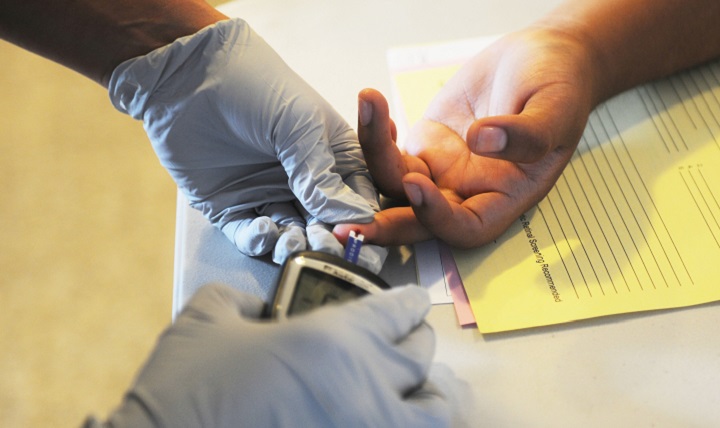National Diabetes Month is a good reminder that many people with diabetes do not have symptoms so it is important to get tested at one of Long Island’s many regarded medical centers, such as Huntington Hospital.
“We work in conjunction with our nutritionist, Andrea Baron , helping patients proactively take care of themselves and learn more about their disease to manage themselves and meet their healthcare goals,” said Kathy Giffuni, the assistant director of nursing at Huntington Hospital. “We are a National Committee for Quality Assurance Diabetes Physician Recognized Organization where we have an active designation talking about excellence in diabetic care.”
Jay Stern, diagnosed with Type 2 diabetes a decade ago, has refused to let the disease take limbs or life like he’s seen it do to others in his circle.
“I saw my friends, one died from diabetes, one lost both legs then died and the third one is my friend who lost one leg, a couple of toes and his hand, and he can’t afford the insulin,” the 59-year-old retired handyman recalls. “I don’t wanna see it happen to me. That’s why I’m taking care of myself.”
As one of more than 30 million Americans – almost 10 percent of the population – living with diabetes, he’s gotten his A1C blood test levels down from 18 percent to a near normal level of 8 percent. The Centers for Disease Control and Prevention estimates that 7.2 million are living undiagnosed.
Stern credits his success to the diabetes wellness program, following his doctor’s prescriptions of taking insulin via an insulin pump, eating right and living a healthy lifestyle. Additionally, Stern receives home visits from nurses who check his blood sugar levels and one on one counselling with endocrinologists on how to manage his disease.
“I need to take care of myself because I want to live a long life,” Stern said. “Some people don’t care when they have diabetes, they don’t take their shots or insulin or test themselves. I don’t want to see that happen.”
Here are some helpful tips from the American Diabetes Association on how to eat healthier and manage diabetes:
Take a Closer Look At Labels
Choose foods with less calories, saturated fat, trans fat, cholesterol and sodium. Also, try to select foods with more fiber, which is listed lower on the label under total carbohdyrate.
Cut Back on Sodium
Decreasing the amount of sodium in the diet can help many people lower their blood pressure. Lowering blood pressure also means you are decreasing your risk for heart attack or stroke, both of which are common diabetes complications. People with diabetes should aim to have 2300 mg or less per day. An easy strategy to cut back on so- dium is to eat more of these foods and less highly-processed foods.
Fresh, unprocessed foods include: fresh fruits, fresh vegetables, dried beans, peas, and legumes, whole grain foods prepared without salt like brown rice, wild rice, oats, quinoa, popcorn, and whole grain barley unsalted nuts and seeds and most fresh or frozen cuts of meat, poultry and fish without added salt water or saline.
Snack Healthy
Know your portion sizes before-hand, and if you aren’t sure, use measuring cups and spoons! Don’t forget to count the carbohydrate into your overall meal plan if you use carb counting! Avoid mindless snacking in front of the TV or computer or while reading or driving. Stock up on healthy options so you always have them on hand.
Set an Exercise Goal & Make a Plan
When you think of a physical activity goal, make sure you consider three points: What activity will you do and for how long? Be specific. How often/when will you do this? Is your goal realistic? Don’t try to change too much at once!
Stay Motivated
Keep on track with your routine by keeping a record of the activity that you do. It can help keep you more accountable for times that you do not make time for activity and times that you could have done more. Mix up your routine with activities that you enjoy. Have a buddy or a group to work out with. Choosing activities that you enjoy, fit into your schedule, and are within your budget will also help keep you motivated.































